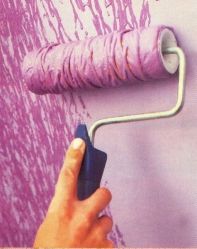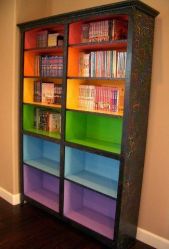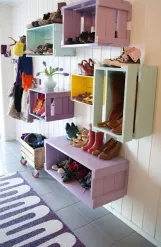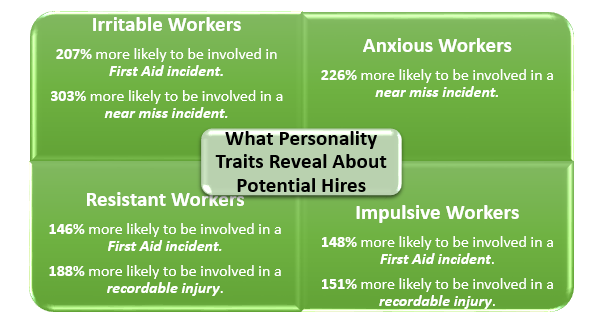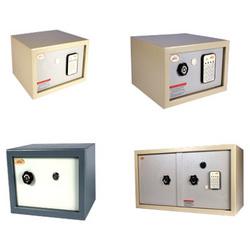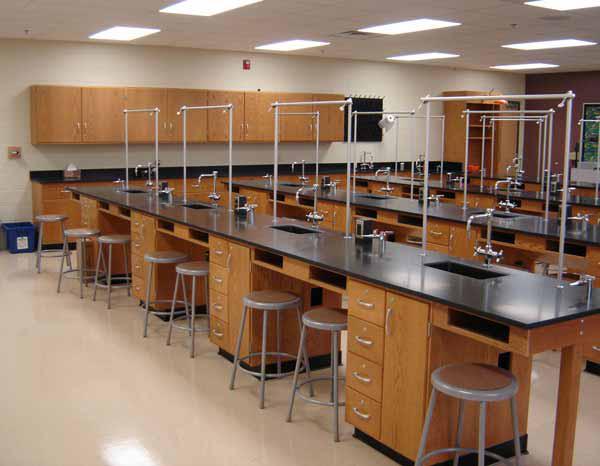Industrial Talks
All Industries Information
Easy Tips to Transform Your Home to a Fun Space
Posted by on December 11, 2014
Your home is the place you spend most of your time at with or without family. But there is no doubting the fact that there is nothing which can be as comforting as that of one’s own home. We all want our living space to be look perfect, specifically people with an interest in home décor. There are many things you can do to transform this little sanctuary of yours, into a fun space. You don’t really have to go for an expensive fix for a fun décor. There are plenty of things you can do on your own, as for the heavy work, you can always seek help.
1. Throw some color:
Nothing translates fun as something in vibrant colors. The best way to turning your home into a place everyone and specially you love to be at is to grab some paint brushes and get creative. But before you do that, do a little research about which colors would best suit your home’s theme and what type of paint will do. There are a number of paint types and finishes; water based, oil based, matte finish, emulsion and many others. So, before you choose anything, see what kind will work best for the type of paint job you need.
2. A comfort zone:


There should be a space in your house where you can just sit back and relax, a corner or part of your house you love. In order to do so, you obviously must need some creativity within you and some help (not necessarily though). Put up some rice lights, make some sheet castle to add an element of nostalgia or just. Turn a corner or even your bed into a dreamy place where you can put some books and or a sheet swing. You can use an old trampoline’s ring and turn it into a fun sitting place.
3. Be Funny:
Well, who doesn’t love something funny? Yes, we all do. Adding some comical tit bits to parts of your house will not just make you smile but people who come to visit your place. Look for ideas around, from movies or one liner through which you can relate it to the décor of your home. Find road side signs and place it somewhere it connects. Funny is always good.
4. Create your own accessories:
Like I said, you don’t have to be a spend thrift to transform your house. Find things you can use as accessories and for your place. PVC pipes, old picture, record, cassettes, old tyres. You can easily recreate a book shelf out useless wooden boxes, just paint them and install them up on a wall, any way you like.
Final Word:
Find out things you earlier discarded, like an old dresser and paint it into something fun. You can paint an entire wall any way you want or use things which seem useless otherwise and turn them into a new revamped version of accessories.
Working on a computer all day? – The negative effects on eye health and vision
Posted by on December 5, 2014
With modernization of almost every sphere of work, we’ve become chained to our computer desks and computers. In fact, with most of us working two or even three jobs, computer use has expanded from “regular” 8-hour use to 10 or even 15 hour use. Without doubt, this way of living is a safe road to many health problems and concerns, one of them being vision impairment.
With professionals whose jobs are strictly linked to computer use, there have been complaints about muscular strain and stress and ocular discomfort. Approximately between 50% and 90% of people that work with computers have experienced visual discomfort.
Extensive computer use has been known to contribute to serious vision issues development. For this reason, too much exposure to computer use should be acknowledged as a growing eye health problem.

What is a CVS?
Eye problems caused by computer use have even got a name – CVS (computer vision syndrome). CVS is not limited to just one eye problem – it encompasses several (or even – a whole range) problems related to eye damage, caused by computer use.
Even though CVS may appear naïve in comparison to other vision problems such as glaucoma, cataracts, etc, it shouldn’t be taken lightly. CVS is similar to carpal tunnel syndrome. It is a repetitive stress injury, occurring when one and the same motion is repeated over and over again. The longer you repeat the activity, the more computer vision syndrome gets worse.
Sitting in front of the computer all day, staring at the monitor requires a lot of effort from eye muscles. As a computer screen adds the elements of screen contrast, glare and flicker, reading from a computer monitor or doing anything else there is more challenging for your eyes than reading from a piece of paper. Research has confirmed that CVS is more likely to develop in those users who have already been “diagnosed” with an eye problem, such as astigmatism or nearsightedness.
As you get older, working at a computer gets even more difficult. The older you get, the lens of your eye becomes less flexible. What happens after the age of 40 is a condition called presbyopia. This is a weakened ability of the eye to focus on far and near objects. With extensive computer use, this condition may develop earlier.
What Symptoms Are Part of Computer Vision Syndrome?
Good news for all computer users is that long and extensive use of computer doesn’t cause long-term damage to the eyes or there still haven’t been found the evidence confirming it does. Still, regular computer use will leave the user with significant eye discomfort and eyestrain.
If you doubt you’ve got CVS, these would be the syndromes you’d be experiencing:
• Eye irritation
• Dry and red eyes
• Blurred vision
• Double vision
• Headaches
• Neck or back pain
If your doctor finds you’ve got more serious eye problems, they are easily solvable with laser eye surgery.
How do I Relieve Computer Vision Syndrome?
With a few simple changes in your work place, prevention and improvement of computer vision symptoms are more than possible.
1. Position
Research has found that the best position of the monitor for the eyes is slightly below eye level and about 20 to 28 inches away from the face. Therefore, the screen should be positioned in such a way that you don’t have to strain your eyes or stretch your neck in order to see what’s on the screen
2. The glare
To reduce glare on the computer screen, change the lighting around you. In case you’ve got a window behind your back or on one of the sides of your shoulders, the monitor will be getting glare and therefore disrupting your working. Until the glare’s gone, shut the drapes so there are no disruptions. A glare filter over the screen monitor also can help protect your eyes
3. Give your eyes a break
No matter how long your working hours are, you should take a break from looking at the monitor. Whenever you get the chance, look away from the screen and gaze out the window. If you are in a cubicle and there are no windows around, look around the room, to spaces with soothing colors. Also, blink as often as you can or use lubricating eye-drops
With much research on the topic not much has been firmly concluded. It is so far evident that computer use may lead to “problems” mentioned above yet it hasn’t been proven whether any of the symptoms are dependent just upon a person’s general visual abilities or they are situation-based and/or computer usage induced.
How to Improve Home Value on a Low Budget
Posted by on November 6, 2014
Need a new home? Everyone is bound to ask themselves this question from time to time. There are two ways of getting a new home. One is to sell the old one and buy new one, and the second is to refresh the existing one and get the new “old home”. Common thing for both is that you have to invest some money and time in the old house, whether you are selling it or not. The point is to improve your home value on a lowest possible budget.
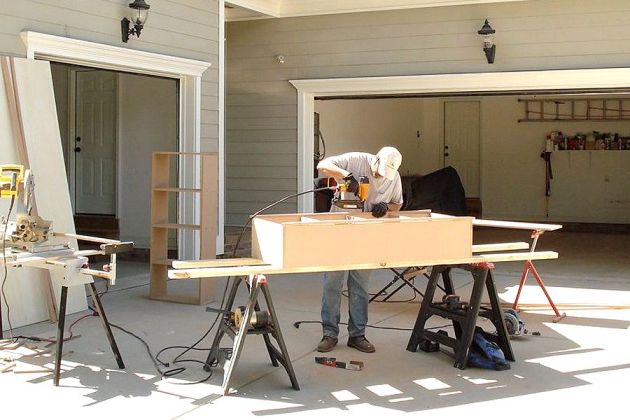
From this point, we will suggest you few tips on how to improve your house value, so let’s begin.
Facelift your kitchen
Kitchen is one of the places where every potential buyer wants to come in first. It has to be seamlessly clean. It has to have a look of place in the house which is used on a daily basis, but still has to look modern and up to date with the current streams in interior design. It can be done easily by changing old faucets, worn out cabinet door and drawer knobs, and replacing old fixtures with the new efficient ones. If you can stretch your budget a little bit more, think of giving a new face to your old kitchen cabinets.
Give a new glow to the bathroom
Bathroom is the part of the house that has to be shiny and of course clean in every moment. No one likes to have moist and moldy bathroom, where wall paint peels off from the wall, or where wall and floor tiles and lie around broken with the pattern all washed out. Paint is cheap. Repaint the walls and retile your bathroom, and with the new (or refurbished) fixtures and faucets your bathroom will shine.
Check the wiring and plumbing
Hire a professional electrician and plumber to check the house electrical wiring. Replace all broken light switches and power outlets. Replace any suspicious wire. Think of replacing conventional light bulbs with CFLs (compact fluorescent light bulb) and go towards green. Check for any water leaks and fix the plumbing. Have your house inspected and provide yourself safety certificate for the house.
Make more storage space
Surely you have a den in your house which is not fully functional as a room. It can be used as a closet. Remodeling that den will give it a new functionality, and may make your house more desirable to a potential buyer.
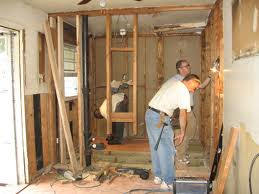
Increase the amount of rooms in your house
Room without the closet isn’t a bedroom, they say. If you have that kind of room in your house with enough space to make a closet in it, do it. It can be done in a couple of weeks, and you’ll have four bedroom house from three bedroom house, for example. While you are remodeling the room, think of some plastering work where needed or do it for decoration only.
Carpeting
When you look at the floor, you’ll surely see what you can do to make your floors look new. First thing to do is to have them cleaned by a professional. Think of placing an interesting designer rug on the carpet so your rooms may look livelier. Smartly choose colors accordingly to the type and color of furniture that you have.
Front yard
Having your yard nicely mowed lawn will help that the first impression of a buyer will be good. Place some shrubs and flowers on the lawn will make your house look more tucked.
Porch
Design your porch in a way that makes everyone stay on it eternally. Put swing, or nice set of garden furniture (set of chairs and a table). Repaint it if it’s needed. Repaint the entrance door and change the door knob.
All of these can be done easily. You can do most of these things yourself without having to bust your budget. But if your budget allows it, hire a professional – after all, they know how to do a perfect job!
Flat Roof Maintenance Tips For Your Commercial Rooftop
Posted by on October 13, 2014
Do you own a commercial building? Then you know how essential it is to take care of each and every aspect of your space. From vacuuming to cleaning the windows, and yes, even roof maintenance. They all impact the way your building looks – and how well it runs on a day-to-day basis. Whether your building works as an office, a storage area, or a storefront, your roofing needs to be properly maintained. These flat roof maintenance tips for your commercial rooftop will help you stay on the right track.
Before we get into maintenance musts, it is important to understand why proper maintenance actually matters. Surely your roof won’t fall apart because you’ve put off roof maintenance for a little too long…right? Well, it all depends. Maintenance is about taking preventative steps. By keeping a close eye on your roofing system, you can tackle small issues right away, save yourself money on larger repairs, and keep the inside of your building safe from water leaks and other roof related issues. In short, your commercial maintenance makes a difference.
Now for tips and tricks to take care of your flat roof. It doesn’t matter if your rooftop is large and expansive or relatively small. It still needs to be well taken care of. Something to consider? While your roofing system may have a warranty for various roofing materials, keep in mind: regular maintenance is often a criterion for warranties to remain valid. You never want to leave your roofing vulnerable simply because your roofing membrane has a guaranteed lifespan of 15 or 20 years. It simply isn’t worth the risk. You need to take care of regular maintenance to keep your roofing system working well – and to keep that warranty valid.
Maintenance can also extend that lifespan – giving you more bang for your buck. So, the first maintenance tip is to check your roofing often. Most professionals recommend that roof inspection be performed twice a year. However when it comes to commercial buildings, it is a good idea to check more frequently. Twice a year will simply not be enough. You should aim to check your roofing as often as possible, preferably following any major storms or every other month. This will help you stay on top of potential issues.
Another flat roof tip for your commercial roofing system is to stay safe. Just because your roof is flat doesn’t mean that just anyone can be walking around up there. Make sure whoever has access to the roof knows where they can walk safely, will not smoke in the area, and won’t leave any tools or equipment laying out on the roof. These small steps can add to the safety of your roofing system. They can also prevent any unnecessary damage from occurring.
For a long lasting and safe roofing system, you will also want to keep a record of all roof inspections, repairs, and maintenance performed. Yes – write everything down! Did you come across missing or torn flashing that requires replacement? Are there any sloping areas that need to be fixed? Any issues you spot – as well as any issues that have been taken care of – should be documented. That will help you track all important information about your flat roof. This will come in handy when it is time to think about your replacement options.
Being a commercial building owner comes with certain responsibilities. That includes regular maintenance. To keep your flat roof working well, remember to inspect often, consider your warranty, take safety precautions, and write down important roof events. It will help your roof last longer – and keep your building free from water leaks and indoor damage.
Author’s Bio: Joe Davis understands the importance of commercial roof maintenance. He has experience bringing commercial roofing products to customers all over the country. In the last few years, he has been working successfully with IKO Roofing Shingles.
How to HireTop Talent in the Construction Industry
Posted by on September 11, 2014

Finally, the time has come for construction contractors to emerge from the industry recession. At the same time, we have Baby Boomers increasingly staring retirement in the face. This presents quite a challenge. Hiring the right employees, screening out bad employees, and properly coaching existing employees is not as easy as it once was.
It is now more critical than ever to find, retain and train the right employees to get the job done efficiently and effectively. This can save companies much needed time and money.
Many employers are asking themselves these questions:
TalentClick, a Canadian employee assessment and talent coaching company, believes in thoroughly understanding people in order to reduce risks, and just may have the answer to these questions, released in a new study. The Safety Quotient™ (SQ™) Personality Risk Assessment is a personality assessment utilized to assist companies with new hires. It is widely conducted on North American working adults in an industrial settings. It measures key personality traits related to safety behaviors in the workplace. It is trusted by employers around the world.
As just one example, they conducted an analysis on a Safety Quotient Analysis on a company specializing in the mining of precious and base metals, which is an industry known for hazardous environments that require workers and managers to collaborate effectively to avoid incidents in the workplace.
The data analysis looked carefully at personality and safety incident data from 80 Supervisory/Management Employees and Front-Line Workers, and these were the results:
The personality traits of “Impulsivity”, “Anxious” and “Distractibility” appear to be factors in elevated incident rates of crew members. The risk levels were significantly lower in “Resistance” and “Impulsivity”. Their workers were most likely to follow rules and guidelines without questioning or pushing back.
The results allowed the mining company to gain the following:
• A clear view of the traits of a high performing worker to be used in external hiring and internal promotion.
• Knowing the “ideal profile” will help ensure the right fit between candidate and job type.
• A better understanding of how to train and develop workers and managers
• A means to provide tailored coaching and training to compensate for performance gaps.
Impulsivity is just one personality characteristic that can affect a manager or front line employee’s job performance. Impulsivity refers to the degree to which a person seeks excitement and taking risks, versus carefully evaluating options before making decisions.
Studies show that the higher the impulsivity rate of a person, the greater the incidence of personal injury on the job. Avoiding hiring this type of employee can benefit your business tremendously:
 The construction industry is notorious for having hazardous environments, strict deadlines, limited training time and severe consequences for workplace incidents.By using data collected on potential hires,both managers and front-line workers, you can determine which candidates would be more likely to cause incidents and injuries that cost you time and money.
The construction industry is notorious for having hazardous environments, strict deadlines, limited training time and severe consequences for workplace incidents.By using data collected on potential hires,both managers and front-line workers, you can determine which candidates would be more likely to cause incidents and injuries that cost you time and money.
Further analysis of personality traits of workers reveals these results:
Consider Personality Profiles
What this valuable information should tell hiring personnel is that it is time to consider using a personality or job compatibility analysis that can become an excellent predictor of the type of individual you are hiring. For example, if you need a superintendent who is organized and works well under pressure without snapping, these types of profiles can help you find people who are skilled at handling more stressful scenarios.
Personality Profiles for Developing Effective Training
Understanding the personality traits of employees can also aid you in developing training programs based on these dimensions. You can implement programs that reduce Resistance, Anxiousness, Irritability and Impulsiveness. You can also develop personas of high functioning, successful employee characteristics, or an “Ideal Profile” of High Performing Employees. Consider setting ranges for specific job roles within your company to help inform job placement and work assignments as well.
Use this information by analyzing it over a period of time to discover long-term trends within your company. Data sets determined over long-term can be used to inform holistic human resource policies and safety program that only benefit your business, saving you time, money and frustration.
8 Fun Activities On A Springless Trampoline
Posted by on February 12, 2014
Jumping up and down on a bouncy surface is great fun for children of all ages but there are plenty of other activities you can enjoy on a trampoline if you think your kids might appreciate a little variety. Take a look at the list below to see what else you could be doing.
- Catch – buy a cheap, blow-up beach ball and enjoy helping your children to improve their hand-eye coordination and have tremendous fun at the same time. Older children can use a tennis ball if they find a beach ball too easy, and keep score to make it more interesting.
- Dancing – boogie on down with extra bounce. This is a great activity for all the family as adults can burn a few calories whilst the little ones either join in or just sit and laugh. If you order a Premier trampoline in Australia or one from another reputable supplier that delivers across the country, your whole family will be able to dance the weekends away in complete safety. If you fall over on a trampoline, it doesn’t really matter!
- Chilling out – if you feel like taking it easy and the weather is nice, grab a couple of beach towels and soak up some rays on your trampoline. Although they are built for bouncing, they can easily double up as a luxury hammock when all you want to do is take it easy.
- Getting creative – armed with some ordinary coloured chalks, you and your kids could spend the afternoon creating a beautiful picture on the surface of your trampoline. Once you are done, you can wash the chalk away using a garden hose and a soft broom.
- Follow my leader – one person is elected to lead and then performs a series of simple tricks, such as seat drops and pike jumps. The rest of the family has to copy the moves and anybody that cannot keep up is eliminated from the game. This is great fun for mixed age groups.
- Tag – have one child lie in the middle of the trampoline with their eyes closed and everybody else run around in a circle. The child in the middle then gets to their feet and attempts to tag the others, still keeping their eyes closed. This can be a really exciting game for small children but make sure you erect the safety net that came with your trampoline before attempting this game. Some of the safety rules for conventional models with springs may not apply to springless trampolines but you still need to take sensible precautions to make sure that your children are safe at all times.
- Twister – if you happen to have a twister mat to hand, you can lay it on your trampoline and enjoy a game in the garden. If not, simply draw the circles on the surface with colored chalk and borrow a set of rules from a friend.
- Slip and slide – as long as there is a safety net all the way round your trampoline, your children can have enormous fun sliding and jumping around whilst you spray the surface with a garden hose or set up a sprinkler nearby.
As you can see, there are many things that you can do with a trampoline in addition to jumping up and down on it. If you are currently helping your child get in shape to play football or to take part in another sporting activity, you may find that some of the games mentioned above will make workouts feel like less of a chore for your son or daughter.
Key Reminders for Purchase & Upkeep of Manufacturing Equipment
Posted by on January 24, 2014
Whatever sector you may be in you will need to take into account the fact that you will have to maintain as well as buy key equipment. But what happens if you don’t know where to begin? You need to ensure that all work equipment is fully maintained and kept in a tidy state. In addition to this, you may even be required to keep a maintenance log and make sure it is up to date. Check out below some of the important reminders to consider when buying and maintaining equipment.
Efficiency
All manufacturing equipment must be kept in an efficient state so that it does not put people in danger. On the other hand, you will need to keep products in efficient order as well as being used for a number of different objectives. This includes the likes of;
- A general sense of increased productivity.
- Decreasing the threat is has on the environment.
- Regularly checking other areas via risk assessment.
Suppliers
One of the most important areas which you should look at when buying equipment is which supplier you use. It is crucial you deal with reputable suppliers that you have had a close relationship with for a number of years. In this way things to look out for when buying features;
- Asking how frequently you will need to maintain the actual equipment.
- The intensity of the usage.
- Any exterior factors to note such as temperature change or weathering.
- Any type of health and safety aspects that could lead to any future malfunction.
Instructions
At the end of the day common sense should always prevail. Therefore reading the manufacturer’s instructions is very important. Whether it is a cnc machine or another type of piece of equipment, it should describe exactly what maintenance should be required to keep everything secure. No matter what it says the guidelines should be followed according to the letter. With every new bit of equipment the manual should come as standard so there should be no excuses.
Log
It is advised in the majority of cases that you should have a maintenance log just in case. This is because if you have high risk equipment then it could prove to be useful in a host of areas such as;
- Planning ahead for any proposed maintenance.
- Having the ability to inform any relevant personnel of what was done beforehand.
- Keeping everything up to date and in the best possible condition.
Shut down
When you buy a new bit of manufacturing equipment it is also essential to shut it down effectively. Furthermore in order to keep it running smoothly you should shut it down normally and store it in a safe place. By ensuring everything is switched off in the correct manner it can prevent any accidents happening not to mention maintaining equipment in a careful manner so it lasts in the long term.
Staff training
There are a whole host of situations when buying new equipment and maintaining it that staff have to understand. Whether they are in a factory or an industrial unit or car line, undertaking training is an important element of manufacturing equipment. They may be required to perform things such as;
- Undertaking risk assessment and how to avoid any major risk of injury.
- Health and safety courses to understand everything on the equipment.
- Understand how the equipment is produced so that it takes into consideration some of the dangers involved.
For whatever reason you really need to be careful as far as buying and maintain equipment is concerned. If you follow some of these pointers, it can ensure a risk free and comfortable working environment for everyone.
Essential Security Equipment For Any Office Premises
Posted by on January 21, 2014
Running any sort of business will always involve security risks from data leaks to equipment theft. Thus, it’s up to the owner to implement a solid system that can protect against these threats and many more. Actually putting together the components can be difficult though as there are plenty of options available. Some systems are more effective at protecting commercial premises than others though, which is what we’ll look at below.
Key-card Access Systems
In order to allow authorized personnel entrance to your company, it is advised that you install some access control systems at all doorways. If possible, lock the side and back entrances and funnel everyone through the front. Provide your employees with a photo ID access badge which they can use to open the electronic door locks. The on-site security guard can check each ID too, ensuring no one can steal a swipe card and gain access to your company in this way.
Intercoms
Constant communication is an essential component of keeping any premises safe. Thus, installing an intercom system around the perimeter of your office is a smart move. In this way, your security team can keep in constant contact with each other. By linking this system up to the interior of your workplace, your directors will have full knowledge of what’s going on through your centralized security office. If something occurs in one part of the building, the intercom will ensure all necessary staff are alerted to the intrusion.
Closed-Circuit Cameras
Your surveillance methods should also include visual observation devices such as monitors and a number of security cameras. Choosing this system is rather complex since there are many types of cameras and CCTV kits available. Think about the following aspects and how you can tailor them to your workplace:
- The number of cameras
- Tilt, pan & zoom capabilities
- Infrared or night vision modes
- Hard disk data capacity
- Wired or wireless setup
You’ll also need to think about the equipment found in your main security office. For example, you’ll need a system that records a suitable amount of footage from each camera. Here, your CCTV DVR player should supply a crystal clear picture from multiple different feeds. In this way, your staff can observe what’s going on around your commercial premises without having to squint at blurry, black and white footage on the workplace monitors.
Alarms & Sensors
For those times when no one’s in the workplace, you’ll need to install some alarm systems to let an external security team know that a break-in is taking place if it occurs. These devices can come in a number of different forms including:
- Magnetic contact
- Photobeam
- Infrared
- Ultrasonic
Each offers its own advantages and disadvantages so you should best talk to the experts and find out which one will suit your needs perfectly. You could even use a combination to provide maximum security in your workplace.
Metal Safes
Our last essential item for corporate work settings is the security safe. This is the last bastion of protection in case a break-in is actually successful. If you’ve found and secured one of these solid boxes to your wall or floor, no thief should be able to steal the important documents and/or valuables contained within. When deciding on a model, choose a safe that has reinforced walls and that is fire resistant. This will serve dual purposes: storing your assets away beyond the reach of thieves and protecting them in case of a fire, flood or other disaster. You should consider the opening mechanism of the safe too, opting for a method that makes it very difficult for an intruder to coerce it out of you as well!
A Corporate Safety Net
With these steps, you’re now on the way to forming a completely secure office in which the risk of theft or data leaks is reduced as much as possible. While you’ll have to dip into your corporate budget to pay for all these components, the benefits you’ll gain will be completely worth it. Not only can you go to work confident that only authorized employees can enter the premises but your on-site security team will have everything they need to properly take care of your building at all times around the clock.
Essential Features of A School Science Lab
Posted by on January 7, 2014
As many UK primary and secondary schools are as of yet unprepared for the changes to the national curriculum to be implemented in September 2014 and the following year, it’s imperative that science departments begin preparing themselves for these changes. This would include preparing themselves to teach the new curriculum as well as making changes to their school science labs so they are able to aptly instruct their pupils in the sciences of biology, chemistry and physics, not to mention astrology and other sciences that will receive greater focus as of this September.
Types of science rooms and labs
There is no uniform school science room to create in readiness for the changes to the national school curriculum and obviously different grades require different rooms and access to different equipment, so this must of course be taken into consideration when making changes to school science rooms and labs.
Perhaps the most common form of school science rooms and labs is the combination classroom/laboratory, a room that provides space for students to receive classical tuition facing the board as the teacher instructs, with laboratory equipment and furniture placed around the sides and at the back of the classroom out of the way. Most rooms of this nature would also feature a lab bench with equipment in a position so that pupils can watch the teacher demonstrate and conduct experiments, usually at the front of the room.
Additional laboratories are often used for certain subjects, most notably chemistry, and labs of this nature are generally dedicated to a particular branch of science and therefore only used for the teaching of that branch of science. However, not all schools enjoy a budget that would allow for the creation of a lab dedicated to a particular branch and would therefore more likely have a combination classroom/laboratory.
Essential features of a good school lab
Regardless of the extent of the budget that your school has to work with, there are certain features that are widely considered to be essential for science instruction and of course health and safety, an important consideration that cannot be overlooked for obvious reasons.
First aid kit – A comprehensive first aid kit is essential and is also a legal requirement for all school science labs and rooms. For labs/rooms in which chemistry experiments will take place a shower is generally also a requirement as this will be used if chemicals come into contact with the pupils or teacher.
Safety floors – Specialised flooring is essential in science rooms and labs and will need to meet the high standards outlined by Government legislation.
Prep room or area – The prep room/area is where chemicals and/or equipment will be stored out of reach of students. Prior to conducting demonstrations and experiments this is where the teacher will prepare the equipment and materials that will be used.
Storage room or cabinet – This room or cabinet is located in the prep room/area and is used to keep dangerous materials and expensive equipment out of reach of the pupils. The room or cabinet should have a good lock and the key should be kept with the teacher or assistants at all times.
Fume extractor – A requirement in all school science labs, a fume extractor cupboard or system is essential in all labs where chemicals are used.
Teacher work or demonstration area – The teacher work or demonstration area should be located in a position so that all pupils can easily see what is being demonstrated. Therefore this area is usually located in the front or centre of the room.
Student work area – These are lab counters designed for student use. They are usually located in a position that affords the students a good view of the teacher work or demonstration area and are generally equipped with basic laboratory equipment including gas taps, sinks and storage cabinets.
School science departments find it advantageous to have their school science labs/rooms outfitted by specialised service providers – like classroom furniture provider Interfocus at www.mynewlab.com – because of stringent health and safety requirements. Moreover, by working with experienced classroom/laboratory outfitting firms, school science departments find themselves in possession of classrooms/laboratories that enable their teachers to provide pupils with outstanding tuition and understanding of the sciences.
How To Add More Value Through Siding and Roofing
Posted by on January 3, 2014
Siding and roofing are the main factors of your home’s curb appeal. Everything from color to material can end improving your home’s resale value up to 82%. Installing new siding and roofing is one of the less expensive ways to improve your home’s value, and give it a fresh look. These tips will help you narrow down the endless amount of options you may face when deciding to replace either your roof or siding.
First we’ll discuss siding:
Materials – Vinyl siding has become a standard for homes today. For years it was not viewed with the highest regard due to some early issues with it. Luckily technological advances have improved vinyl siding tremendously. There is a new contender in the ring, fiber cement. Despite being relatively new, fiber cement has exploded in popularity for several reasons. Fiber cement costs much less than stone, cedar and wood siding, but retains the aesthetics of them. The durability of fiber cement siding surpasses most other siding options by decades with companies offering warranties from 15-50 year guarantees.
Colors – The color of the siding is just as important as the material you choose. With wood and stone your choices are limited, but vinyl and fiber cement offer a wide array.
White and Cream – Possibly the most popular siding color, white and cream are often seen as a very classic look for homes. The hues of white alone vary greatly but they all offer the same desired effect. Lighter colors do not clash with a house’s color scheme and it also makes the house appear larger.
Yellows and Browns – Lighter shades of yellow have the same desired affects as white, especially if your homes accents are bright white. Browns range from the very light sand, being very neutral, to a very dark brown. The darker brown is often used on larger homes where the appearance of size is less important. The other benefit is that brown hides dirt more than any light color could.
Grays and Blues – Grays tend to be the more popular choice for smaller homes, again it increases the size. Darker shades of blue or deep shades of gray are often used when brighter shades of white are used as trim. This adds definition to the home and gives it a more modern edge.
The color of siding is often dependent on roofing, which is the next topic.
Materials – The materials used in siding often depend on the style you are trying to achieve. These range in price and color as well.
Clay tiles – These are very attractive, long lasting, low maintenance, and non-combustible. But they are very heavy, expensive, and some colors are prone to fading.
Wood Shingles & Shakes – These offer a very pleasant natural look and are easy to repair and replace. The downsides are that they do not stand up to weather well, and are an increased fire hazard.
Spanish Tile – Perfect for that upscale look to your home and they can last up to 70 years. Unfortunately they are very expensive and heavy.
Asphalt Shingles – These are the most popular due to their low cost and variety of colors. They do have drawbacks if you are concerned about the environment.
Updating your home’s siding and roofing is not only about improving the look of it, but it will also help with your home’s energy efficiency. Vinyl siding installation in NJ has become popular because of this, often saving residents 15-20% on their energy bills.
Author’s Bio: John Smith is a professional writer and author of Industrial Talks. He has done well research on home improvement. In this article, he wrote about how can we add more value through siding and roofing. Follow John Smith on Twitter, Facebook and Google+ to stay update.
